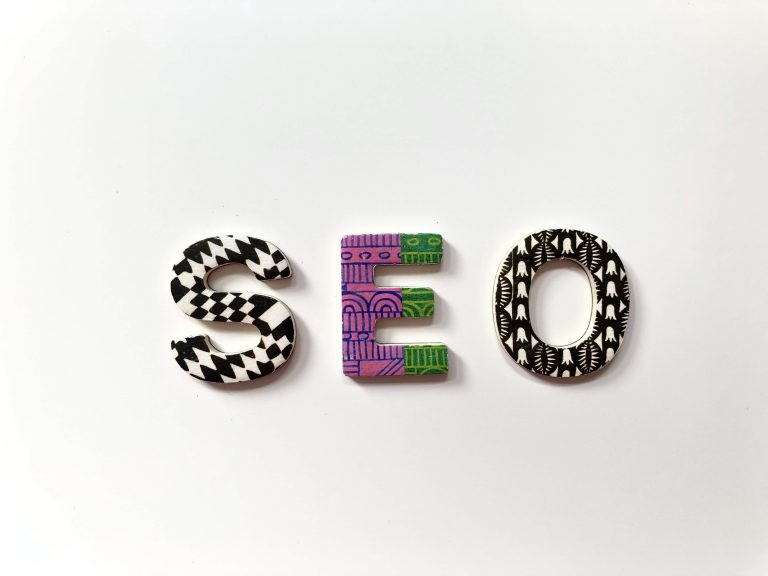Understanding the Differences Between SEO and SEM: A Comprehensive Guide
Introduction
In the vast digital landscape, Search Engine Optimization (SEO) and Search Engine Marketing (SEM) have emerged as two distinct yet interconnected approaches to enhancing online visibility. While both strategies share the common goal of driving targeted traffic to websites, they differ in their methodologies, costs, and the nature of the results they deliver. This comprehensive guide aims to provide a deep understanding of the nuances that separate SEO from SEM, enabling businesses and individuals to make informed decisions about their digital marketing strategies.
Table of Contents
- What is SEO?
- On-Page SEO Techniques
- Off-Page SEO Techniques
- Technical SEO Practices
- What is SEM?
- Pay-Per-Click (PPC) Advertising
- Cost Comparison: SEO vs. SEM
- Timeline Comparison: SEO vs. SEM
- Deciding Between SEO and SEM
- Combining SEO and SEM for Optimal Results
What is SEO?
Search Engine Optimization (SEO) is the process of optimizing a website to improve its visibility and ranking in organic (non-paid) search engine results. The primary goal of SEO is to increase the quality and quantity of website traffic by making the site more accessible and relevant to both search engines and users.
SEO involves a multifaceted approach that encompasses on-page optimization, off-page optimization, and technical SEO practices. By adhering to best practices and guidelines set forth by search engines like Google, websites can enhance their chances of ranking higher in search results for relevant keywords and queries.
On-Page SEO Techniques
On-page SEO focuses on optimizing the content and elements within a website’s pages to make them more search engine-friendly and user-friendly. Some common on-page SEO techniques include:
- Keyword Research and Optimization: Identifying relevant keywords and strategically incorporating them into page titles, headings, meta descriptions, and content to signal relevance to search engines.
- Content Creation and Optimization: Creating high-quality, informative, and engaging content that provides value to users and aligns with their search intent. This includes optimizing content for readability, structure, and user experience.
- Image Optimization: Optimizing images by compressing file sizes, using descriptive alt text, and optimizing image names for better indexing and user experience.
- Internal Linking: Establishing a logical and hierarchical structure of internal links to help search engines understand the website’s architecture and distribute link equity effectively.
- URL Structure Optimization: Creating descriptive and user-friendly URLs that accurately reflect the content of the page, making it easier for search engines and users to understand the page’s topic.
Off-Page SEO Techniques
Off-page SEO focuses on activities outside the website that can influence its visibility and authority in search engine results. Some common off-page SEO techniques include:
- Link Building: Acquiring high-quality backlinks from reputable and relevant websites, as search engines consider backlinks as votes of confidence and authority.
- Local SEO: Optimizing a business’s online presence for local search results by claiming and optimizing local listings, obtaining positive reviews, and ensuring consistent citation of business information across the web.
- Social Media Marketing: Leveraging social media platforms to promote content, engage with audiences, and build brand awareness, which can indirectly influence search engine rankings.
- Influencer Marketing: Collaborating with industry influencers and thought leaders to promote content and gain exposure to their audiences, potentially leading to backlinks and increased visibility.
Technical SEO Practices
Technical SEO involves optimizing the website’s infrastructure, code, and architecture to ensure that search engines can easily crawl, index, and render the site’s content. Some common technical SEO practices include:
- Site Speed Optimization: Improving website load times and performance by optimizing code, leveraging caching, and implementing techniques like lazy loading and content delivery networks (CDNs).
- Mobile Optimization: Ensuring that the website is mobile-friendly and provides an optimal user experience across various devices and screen sizes.
- XML Sitemaps and Robots.txt File Optimization: Creating and maintaining an XML sitemap to help search engines discover and index a website’s content, and using a robots.txt file to control which pages are crawled and indexed.
- Structured Data Implementation: Incorporating structured data markup (e.g., Schema.org) to provide search engines with additional context and information about the website’s content, enabling rich snippets and enhanced search results.
- Security and HTTPS Implementation: Securing websites with SSL/TLS certificates and implementing HTTPS to protect user data and improve trust and credibility with search engines.
What is SEM?
Search Engine Marketing (SEM) is a broader term that encompasses both SEO and paid advertising strategies, such as Pay-Per-Click (PPC) advertising. While SEO focuses solely on organic search results, SEM combines organic and paid efforts to increase a website’s visibility and drive targeted traffic.
Pay-Per-Click (PPC) Advertising
PPC advertising is a form of online advertising where advertisers pay a fee each time their ad is clicked. This model allows businesses to display their ads prominently in search engine results pages (SERPs) and other online platforms. Some key aspects of PPC advertising include:
- Keyword Research and Bidding: Identifying relevant keywords and phrases that align with the business’s products or services, and determining the bid amount (the maximum cost per click) for each keyword.
- Ad Copy Optimization: Crafting compelling and relevant ad copy that resonates with the target audience and encourages them to click on the ad.
- Landing Page Optimization: Ensuring that the landing pages associated with the ads are optimized for conversions, providing a seamless and relevant experience for users who click on the ads. It’s also important to know which attributes describe a good landing page experience.
- Campaign Management and Optimization: Continuously monitoring and optimizing PPC campaigns by analyzing performance metrics, adjusting bids, and refining targeting strategies to improve return on investment (ROI).
- Retargeting and Remarketing: Displaying targeted ads to users who have previously interacted with the website or shown interest in the business’s products or services, increasing the chances of conversion.
Cost Comparison: SEO vs. SEM
One of the key differences between SEM and SEO lies in their cost structures. While SEO may require an upfront investment in terms of time, resources, and expertise, the long-term costs can be relatively lower compared to SEM.
SEO typically involves the following costs:
- Content creation and optimization
- Technical SEO implementations and maintenance
- Link building and outreach efforts
- SEO tools and software subscriptions
- Training and education for in-house teams or hiring SEO professionals
On the other hand, SEM, which includes PPC advertising, requires a continuous budget allocation for ad spend. The cost of SEM campaigns can vary significantly depending on factors such as:
- Industry competitiveness
- Keyword bidding prices
- Ad campaign scope and targeting
- Quality Score (a metric used by search engines to determine ad relevance and determine cost-per-click)
- Ongoing campaign management and optimization efforts
While SEM campaigns can generate immediate traffic and conversions, the costs can quickly add up, especially in highly competitive industries or for broad keyword targets. However, businesses with a substantial advertising budget may find SEM to be a worthwhile investment for its potential to drive targeted traffic and conversions.
Timeline Comparison: SEO vs. SEM
Another key difference between SEO and SEM lies in the timeline for seeing results. SEO is generally considered a long-term strategy, with results often taking several months or even years to materialize fully.
The timeline for SEO depends on various factors, including:
- The age and authority of the website
- The competitiveness of the targeted keywords
- The quality and consistency of SEO efforts
- The overall search engine algorithm updates and changes
On the other hand, SEM, particularly PPC advertising, can yield almost immediate results. Once a campaign is set up and properly configured, ads can start appearing in search results and driving traffic to the website within a matter of hours or days.
However, it’s important to note that while PPC campaigns can generate immediate traffic, achieving optimal results and maximizing return on investment (ROI) often requires ongoing monitoring, testing, and optimization. The timeline for achieving profitability and sustainable success with SEM can vary depending on the industry, competition, and the effectiveness of the campaign management strategies.
Deciding Between SEO and SEM
When it comes to deciding between SEO and SEM, there is no one-size-fits-all solution. The choice depends on various factors, including business goals, budget, target audience, industry competitiveness, and the desired timeline for results.
Here are some considerations to help guide the decision-making process:
- Business Goals: If the primary goal is to generate immediate traffic and conversions, SEM may be the preferred choice. However, if the goal is to build long-term brand awareness, authority, and organic visibility, SEO should be the focus.
- Budget: Businesses with limited marketing budgets may find SEO more cost-effective in the long run, as it requires an upfront investment but can provide sustainable organic traffic without ongoing ad spend. Conversely, businesses with larger budgets and a need for immediate results may opt for SEM campaigns.
- Target Audience: Understanding the target audience’s search behavior and intent is crucial. If the audience is primarily searching for informational or educational content, SEO may be more effective. However, if the audience is actively searching for products or services to purchase, SEM could be a better choice for capturing that demand.
- Industry Competitiveness: In highly competitive industries with fierce bidding wars for popular keywords, SEO may be a more cost-effective approach. However, in niche industries or local markets, SEM could provide a competitive advantage by allowing businesses to target specific keywords and locations.
- Timeline: If immediate results are required, SEM is the better choice. However, if a long-term, sustainable strategy is the goal, SEO should be the primary focus, with potential integration of SEM for short-term boosts or specific campaigns.
Combining SEO and SEM for Optimal Results
While SEO and SEM are distinct strategies, they can be combined to create a comprehensive and effective digital marketing approach. By leveraging the strengths of both, businesses can maximize their online visibility, reach targeted audiences, and achieve their desired objectives.
Here are some ways to integrate SEO and SEM:
- Keyword Research: Conduct thorough keyword research to identify high-value keywords and phrases that align with both SEO and SEM strategies. This ensures that efforts are focused on the most relevant and impactful keywords for the business.
- Content Marketing: Create high-quality, SEO-optimized content that not only improves organic rankings but also provides valuable information to potential customers. This content can then be promoted through SEM campaigns, driving targeted traffic and increasing brand awareness.
- Landing Page Optimization: Optimize landing pages for both SEO and PPC campaigns. This includes optimizing page titles, meta descriptions, content, and page structure for search engines, while also ensuring a seamless and conversion-focused experience for paid traffic.
- Remarketing and Retargeting: Leverage SEM remarketing and retargeting strategies to re-engage website visitors who may have initially arrived through organic search traffic. This can help nurture leads and increase conversion rates.
- Data Analysis and Optimization: Continuously analyze data from both SEO and SEM efforts to identify areas for improvement, optimize campaigns, and make data-driven decisions to refine strategies and allocate resources effectively.
By combining SEO and SEM, businesses can enjoy the best of both worlds – the long-term, sustainable benefits of organic search visibility, and the immediate traffic and conversion potential of paid advertising. However, it’s important to strike the right balance and allocate resources strategically based on business goals, budget, and target audience.







